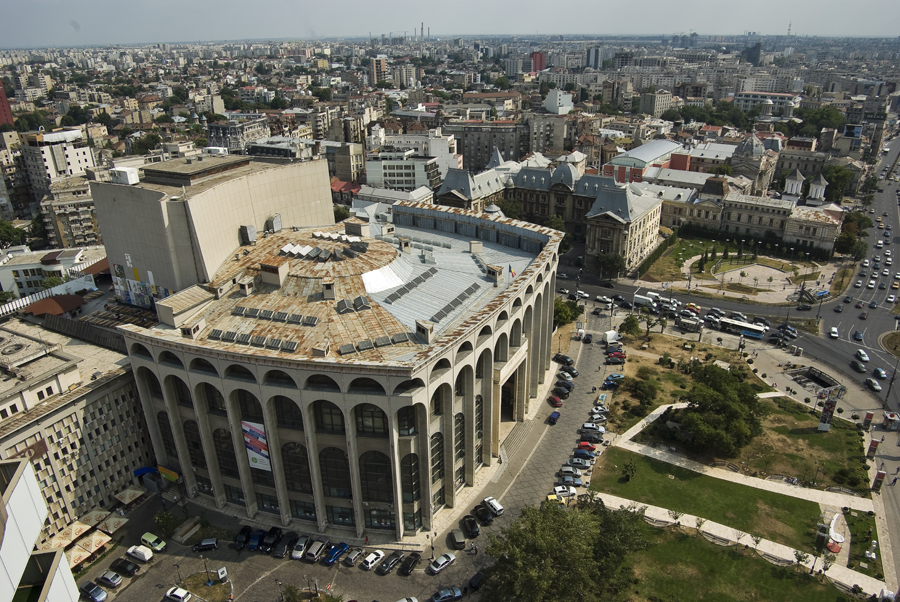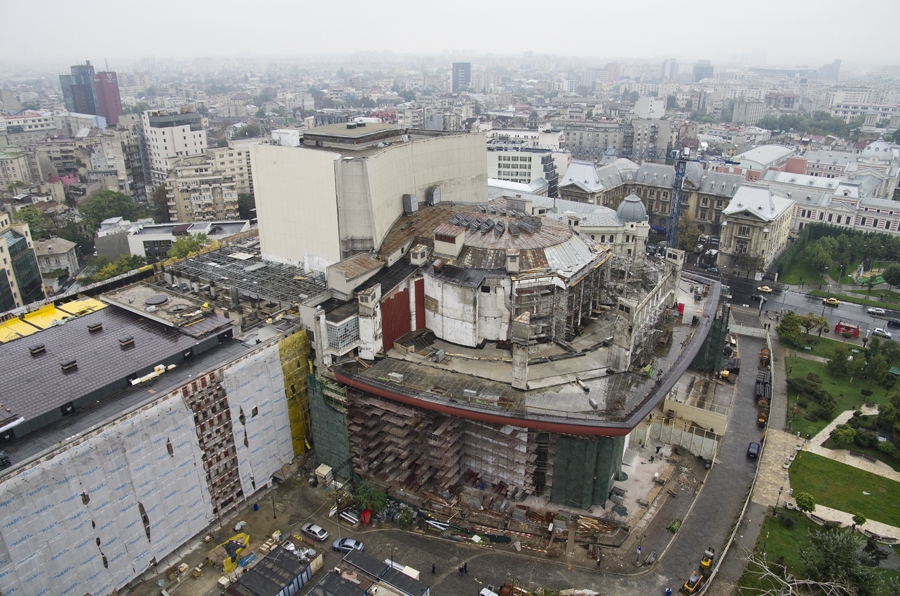Text: Stefan Ghenciulescu
Recent public architecture operations in Romania make me mad. For example, the project for the protection of the Roman ruins in the historic city of Alba Iulia is a revolting shack, with the roof shaped as an open book. It’s tenth rate architecture, but obviously living up to the expectations of the City Hall. This project stands out by its ridiculousness, but it actually expresses a process which is ongoing, despite the crisis: grand public operations made without a competition, without public consultation, without even a debate about the program or the relationship with the city; good intentions, I am sure, but a lot of missed opportunities.
Sadly, it’s the case of the ongoing refurbishment of the National Theater in Bucharest. Of course, the theatre was better before its remodeling, on Ceausescu’s orders. It was a high-quality 60s modernist project, which should not have been massacred. But the whole thing is history now and the house has been changed fundamentally. Working on this building is essential – it badly needed modernization, and I, for one, don’t regret the Ceausescu façade. But what is the point of such an operation if your main purpose becomes the ambiguous reconstruction of an image, lost decades ago, and in the process getting rid of thousands of square meters of cultural spaces? Several galleries and the National Dance center are among the victims.
The National Library is also a hybrid – not brave confrontation with totalitarian architecture, nor soft recovery: a shopping mall image, and a relationship with the river Dâmboviţa consumed through a technical ground floor. Meanwhile, a new Operetta is being built in the neighbourhood; we shall talk later about this project, and also about how the cars are reconquering the center of Timișoara, after a hard battle with the people and the trees there, and all thanks to the new city mayor.
As we are all tired of helpless whining, we should also talk about places with some real action going on. For me, it was refreshing to attend Transylvania Architecture Biennale and to see how all the good actions in the city have been promoted. The prize for public spaces went to a project we wrote (again) in this issue: Mill Canal in Reghin, a project that started with the dreams of young architects and shaped up through a fortunate partnership with a more open and bold local administration.



